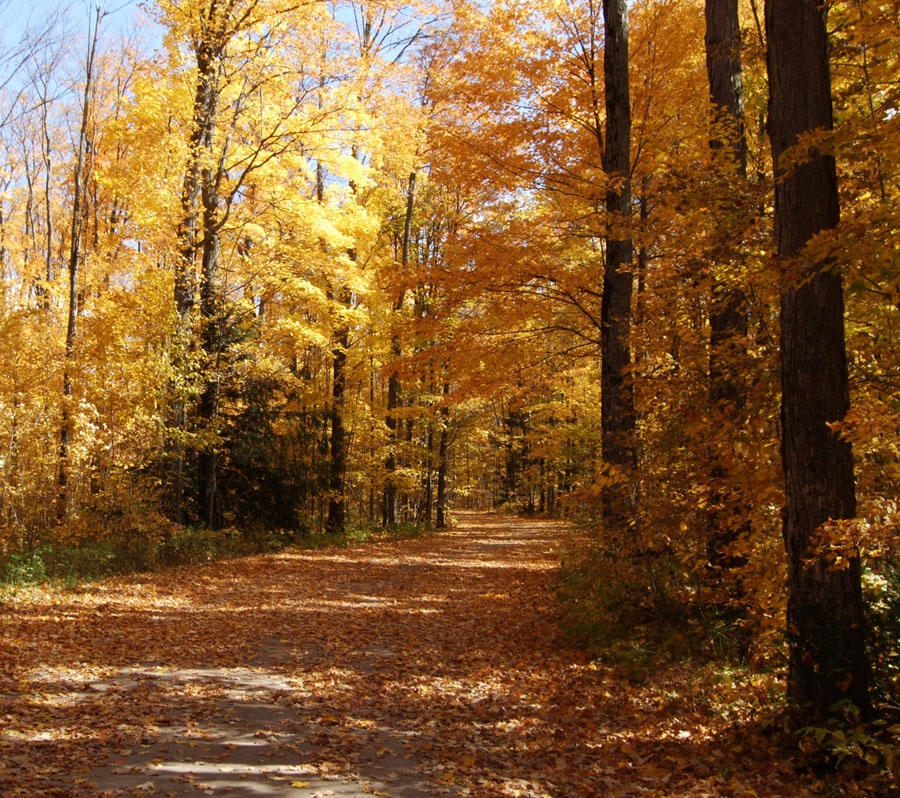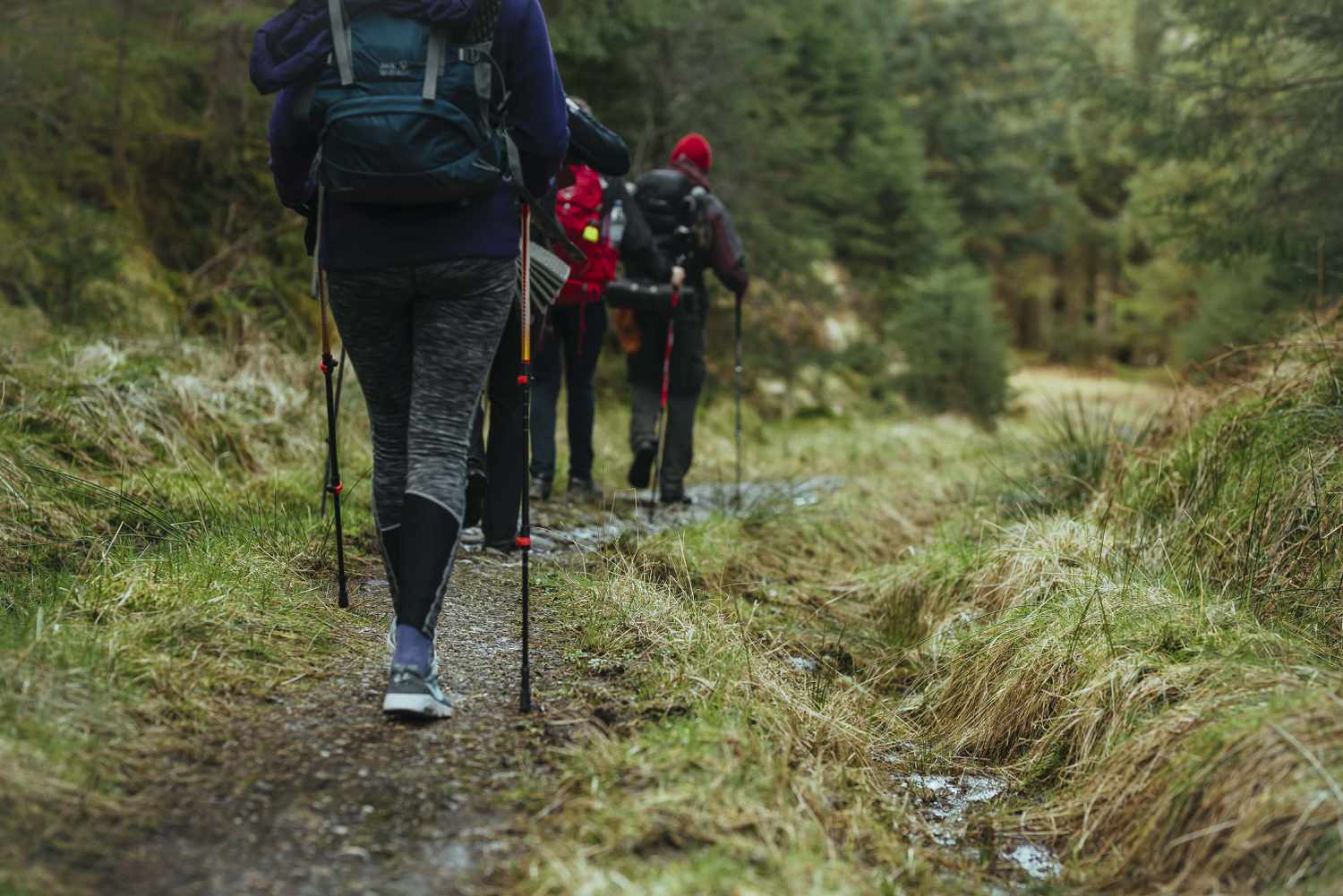Hiking & Paddling Safety
Be safe in NVCA's Conservation Areas
If you are visiting a conservation area, you assume these and other risks inherent to trails and natural areas.
- Trails may follow cliff edges, pass through areas with caves and crevices, or areas along rivers, streams and ponds with no barriers from steep slopes or water.
- Trails may be slippery, particularly if they are wet, snow covered or icy.
- Trails may be uneven or have obstructions like tree roots that pose a tripping hazard.
- In forested areas, trees and branches may fall at any time, but are a particular hazard during high winds or following a storm.
- Conservation areas are home to wild animals and birds. While they are a joy to watch, give wild animals their space. Watch from a distance.
- The ticks that may carry Lyme disease can be found across our region and most of southern and eastern Ontario. If you are heading out to an area where ticks may be present – particularly wooded areas with long grass – take precautions to minimize your risk. Hikers and others heading outdoors should use insect repellant (with DEET) on their skin or clothing, tuck in their shirts, wear long pants and tuck their pants into their socks, and check for ticks after every two or three hours of outdoor activity. Put a tick and flea collar on your pet. For more information on Lyme disease, visit the Simcoe Muskoka District Health Unit.
- Cell phone coverage may be limited in some conservation areas.

Paddling Safety
The Nottawasaga River is a remote, wilderness area and can be hazardous year round. There are significant logjams between Angus and Edenvale Conservation Area as well as other areas along the Nottawasaga River that require portaging.
Whether you are using a kayak, canoe or stand up paddle board, all watercrafts are required to have the appropriate safety equipment. Each year, paddlers get stranded and have to be rescued. Know your limits. Read these paddling safety tips before your trip.
The Ontario Provincial Police has also provided these safety tips.
If you are planning on paddling in the Minesing Wetlands, remember it is not suitable for those who have little to no paddling experience. Every year, first responders, including the Ontario Provincial Police, rescue unprepared visitors from Minesing Wetlands. If you are a skillful paddler, but do not know your way around Minesing Wetlands, we recommend going with an experienced guide.
Hiking Safety
No matter how long the trail, follow a few basic hiking safety rules for a fun and safe trip
- Wear proper hiking gear for the weather and the trail you’ll be travelling.
- Ensure you have a navigation device (compass, GPS, map).
- Never venture out alone before telling someone where you are going.
- Bring along some water and a snack. Remember your sunscreen in both the summer and winter!
- Hike to the weather, modifying your speed in rain or icy conditions.
- Watch for change in terrain/hidden hazards, and be extra cautious when hiking in areas with caves, crevices and steep slopes.
- Take particular caution during hunting season – Review our Be Seen Be Safe brochure for tips to keep you safe.
- All forms of smoking are prohibited in all conservation areas and other outdoor spaces owned and managed by the Nottawasaga Valley Conservation Authority (NVCA), except in parking lots. Learn more here.

Forest Fire Survival Tips
While large forest fires are rare in our area, anyone who enjoys time out in nature should be aware of these fire survival tips:
- Be aware of what’s going on around you at all times.
- Be alert for the first signs of forest fire:
- Smell of smoke unlike a normal campfire
- Falling ash
- Abnormal wildlife behaviour, such as animals running through the forest or large numbers of birds flying away
- You may hear the approach of a large fire before seeing the flames
- Stay calm and assess the situation.
- Determine which way the wind is blowing.
- If the wind is blowing from the same direction of the fire, that means the fire is very likely moving your way
- If the wind is blowing towards the fire, head into the wind
- Leave the area. Remember, fire travels faster than you. Leave immediately.
- Look for an escape route.
- Fire travels uphill and downwind fastest. The safest routes are typically downhill and upwind.
- Seek safer zones such as:
- Rivers (stay in the water in a place where you can stand)
- Lakes (stay in the water in a place where you can stand)
- Large level areas away from combustible material or previously burned over
- If the fire is nearing you or you’re becoming trapped:
- Find low ground, such as a gulley or ravine
- Dig a depression against the wall of the ravine
- Cover yourself with earth or natural fibres (synthetic fibres melt), leaving no skin exposed
- Breath inside your clothing next to your body to protect your respiratory tract from inhaling hot gasses
